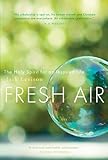Jack Levison
Posted: 10/10/2012
Last week a recent college graduate stayed with us. Her parents, born
and raised in Vietnam, spent time in a refugee camp in Cambodia, then
came to Seattle, where her mother gives manicures and pedicures and her
father is a landscaper. Talking with her reminded me of a trip my wife
Priscilla and I took to Cambodia before Angkor Wat became a tourist
sensation. At a time of global crisis, when so many children are poor,
so many parents hopeless, so many nations teetering on the brink of
genocide, perhaps these reflections about my visit to Cambodia will
bring a glimmer of hope from the Killing Fields.
On a balmy January Wednesday, in the late morning, we visit S21, a
school turned prison in which the Khmer Rouge tortured their own people.
The school prison is tucked inauspiciously into a neighborhood in Phnom
Penh. Row after row of photographed faces of the dead confront us. I
notice their eyes, few of which turn away from the camera, many of which
pose defiance, some fear. Through the barred windows of the third
story, I look down to the shacks that line the outer walls of the
torture school and see a child, about my eight year old daughter's age,
taking a bucket bath, going on in life as if some of the world's worst
cruelties did not occur right where I stand, on the other side of the
wall.
In the early afternoon, we bounce our way along dirt roads to the
Killing Fields. In the monument of skulls, I look at the eye sockets,
empty thousands of them, in which there are no longer defiant eyes -- no
more frightened ones, either. I wander alone into the small fields,
accompanied by the enthusiastic, nearly raucous music of an elementary
school located not more than 200 yards away. Children, always the echo
of children, bathing, singing, begging -- full of life, expectation,
routine.
Toward the back fence, among some trees, I walk alone. From one of the
trees, I am greeted, "How are you?" Two girls, in age somewhere between
my 4-year-old son and my 8-year-old daughter, greet me. We begin to
talk, and they practice their English. We count, "One, two, three ..."
and I begin to quiz them about their numbers. They take out some pens,
and I write the numbers, 1 through 10, on one of their palms. We laugh
together, and their eyes, those confident eyes, give nothing away about
where they are standing -- like the bathing child and the sing song
school children. These girls stand counting in English, smiling,
giggling schoolgirls on the mass graves of their mothers' mothers.
I have nothing in my pack to give these girls, around whom two or three
others have gathered -- none raising a palm to request a gift, none
lifting a hand to beg. Still, I manage to find some band aids that I
have squirreled away in my medicine pouch and distribute them,
ceremoniously doctoring a sampling of scraped knees as I would my own
son's small shins. I photograph the children, hoping to capture their
eyes, and then leave, disappointed that I have no candy canes or granola
bars -- measly but palpable gifts -- to give them. I return to
Priscilla, who has only a single pouch of Malaysia Airlines peanuts in
her purse. With peanuts in hand, I return to the spot where I met these
children, in the shade of the trees to the rear of the Killing Fields,
and I sheepishly open the peanut bag. I count out the peanuts, about 18
in all. The yield is three peanuts per child -- three small peanuts from
an airline snack -- three peanuts in each palm, in each child's small
body.
The children line up at the invisible altar, opening their palms, which
are cupped together to receive the gift. Each receives three peanuts,
which I place delicately in their hands, the body of Christ broken for
them. They do not stand in pious repose but look me straight in the eye,
eye to eye, and receive a gift that is embarrassingly meager. But their
gratitude and knowing eyes invest three peanuts with grace. There, in
the shade of a tree on the Killing Fields a few miles from the weathered
city of Phnom Penh and in sight of a monument full of eyeless skulls,
the vitality, the tenacity, the transparency of these children transform
three peanuts into a sacred feast.
Follow Jack Levison on Twitter: www.twitter.com/spiritchatter





No comments:
Post a Comment